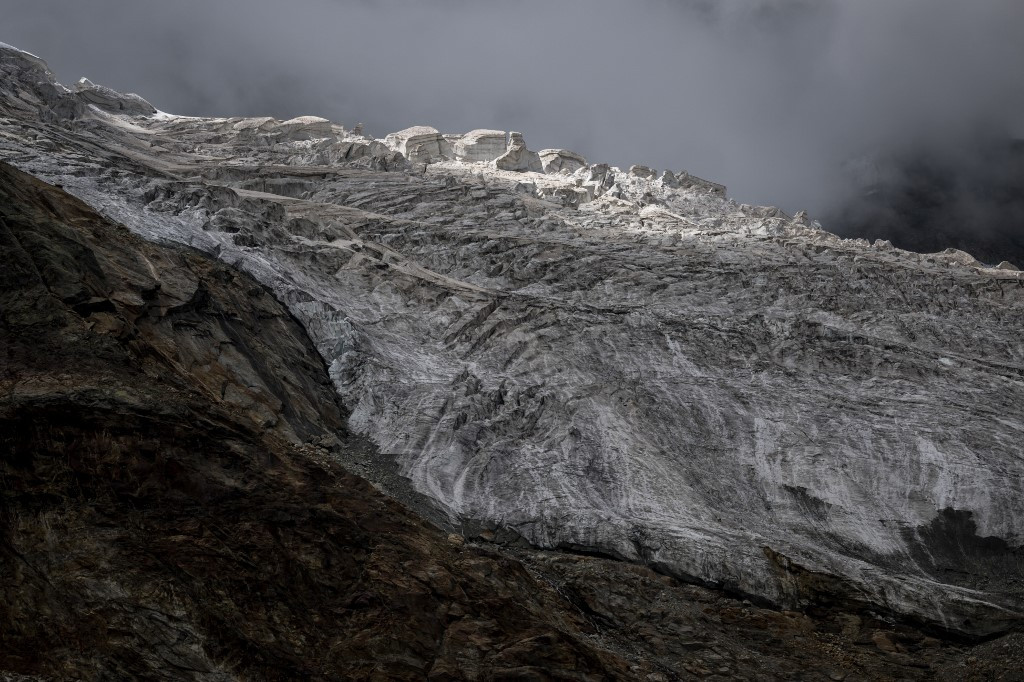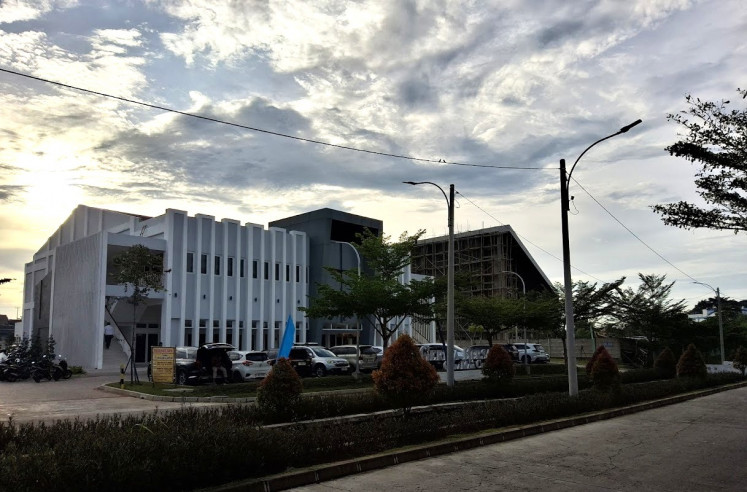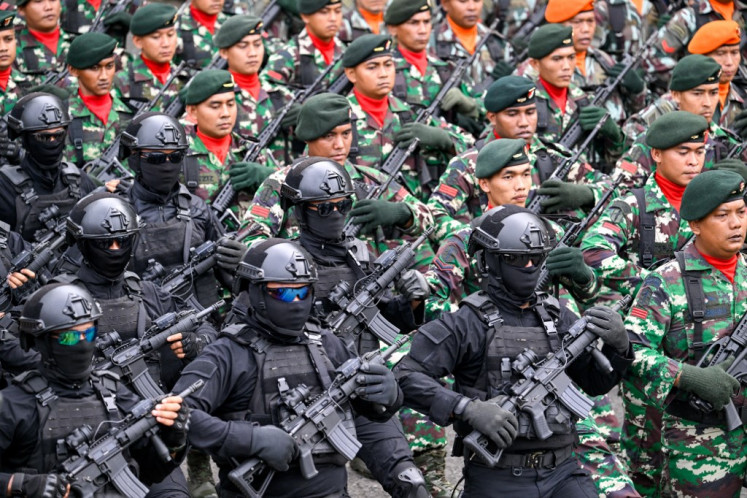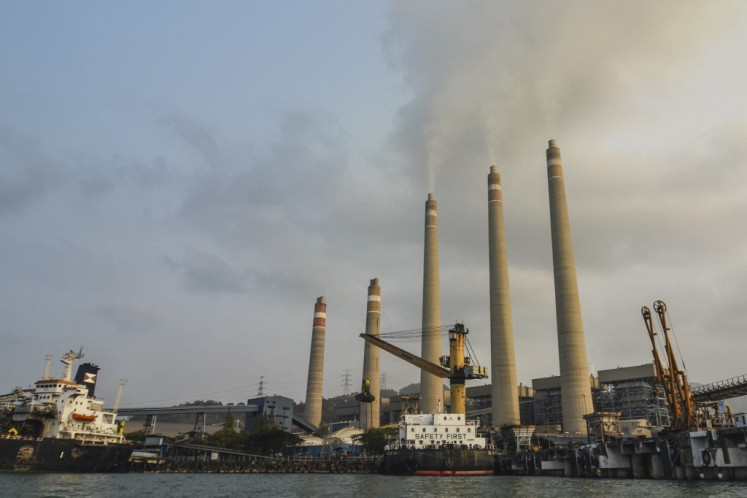Popular Reads
Top Results
Can't find what you're looking for?
View all search resultsPopular Reads
Top Results
Can't find what you're looking for?
View all search resultsMeltdown at the top of the world
The UN declaring the International Year of Glaciers’ Preservation cannot come at a more opportune or critical juncture for the world to not just sit up and take notice, but to stand up, corral all available resources – knowledge, technology, finances – and take action to avert the disastrous effects of accelerating glacial melt in the 3,500 km-long Hindu Kush Himalaya region.
Change text size
Gift Premium Articles
to Anyone
T
he United Nations has declared 2025 the International Year of Glaciers’ Preservation, making it a fitting moment to confront the stark reality that the world’s ice sheets are melting. Climate change is accelerating this trend, particularly in the Hindu Kush Himalaya, a region known as the Earth’s “Third Pole” because it contains the largest volume of ice outside the Arctic and Antarctica.
This mountain range, which spans 3,500 kilometers across eight countries from Afghanistan to Myanmar, is warming roughly three times faster than the global average. If temperatures rise 3 degrees Celsius above preindustrial levels by the end of this century, up to 75 percent of the region’s glaciers will melt, reducing water availability, undermining food and energy security and exacerbating biodiversity loss.
Glacial melt thus threatens irreversible damage to nearby communities and local economies. But it will also fuel instability around the globe by increasing migration, disrupting trade and causing food prices to rise.
The 2021 flood disaster in Nepal’s Melamchi River offered a glimpse of what is to come. Unusually heavy monsoon rains, coupled with excessive snowmelt, triggered a debris flow that wiped out thousands of hectares of agricultural land and destroyed critical infrastructure, leaving hundreds of thousands of people without access to water.
As the glaciers retreat, there will be too little water: a problem that is projected to afflict the Hindu Kush Himalaya by 2050. Dwindling river flows will make it more difficult to irrigate crops in an area that produces around one-third of the world’s rice and one-quarter of its wheat.
Water supply and sanitation systems will become difficult to maintain, adding to the 1 billion people who already lack access to basic sanitation in the region. Food insecurity will almost surely worsen as well, while communities and even entire industries will likely need to migrate in search of fresh water. Asia’s poorest and most vulnerable populations will be hit the hardest.
The world must take urgent action to avert the disastrous effects of accelerating glacial melt in this region. That means deepening our knowledge by investing in multi-hazard risk assessment, because the extent of the damage will largely depend on whether global temperatures rise by 1.5, 1.8, 2 or 3 degrees.
We must also strengthen integrated river basin management by enhancing data collection, facilitating knowledge sharing, optimizing water management and coordinating among people and communities living upstream and downstream.
Ensuring that new and existing infrastructure is climate resilient is essential for maintaining access to safe drinking water and energy security, as well as sanitation, irrigation and transport systems. It is equally important to protect ecosystems and promote nature-based solutions, such as afforestation, reforestation, wetland preservation and floodplain restoration.
Every component of this strategy requires more financing. Development institutions must continue to scale up investment in the Hindu Kush Himalaya and work together to recast this glacial region and its river basins as a global public good, especially given their importance for agricultural and industrial activities.
Lastly, the international community must advance the equitable use of shared glacial resources through cooperation and diplomacy. This would help defuse potential tensions and promote sustainable development, ensuring that the region’s glaciers serve as a force for peace rather than conflict.
The Asian Development Bank (ADB), of which I am president, has taken steps to meet some of these goals. Together with the Green Climate Fund and country partners, ADB recently launched the Glaciers to Farms program, which will mobilize US$3.5 billion to strengthen climate resilience in agriculture in Central and West Asia.
Meanwhile, the Building Adaptation and Resilience in the Hindu Kush Himalayas-Bhutan and Nepal initiative is helping plan and design climate resilient infrastructure and services. And ADB is also piloting new financing instruments, such as eco-compensation mechanisms, carbon markets and water trading and sustainability-linked bonds.
When UNESCO and the World Meteorological Organization (WMO) launched the International Year of Glaciers’ Preservation last month, WMO Secretary-General Celeste Saulo said it should serve as “a wake-up call to the world.”
The global community must do everything in its power, from building climate resilience to accelerating the green transition and promoting regional cooperation, to ensure a sustainable future for the billions of people who depend on glaciers and their related ecosystems. Failure to act now would have catastrophic consequences for us all.
---
The writer is president of the Asian Development Bank.











